![How to make a really good margarita.]()
Have you hit 90 degrees yet where you live? We have (yep - 92 on May 6 in Minneapolis, crazy), and I loved it. After months of snow and cold and slush and sweaters, I absolutely revel in the warmth. Maybe later in the summer I'll be crouched down inside next to the air conditioner, but not now. Right now, when it's warm out, I want to soak my bones in it.
![Summer warmth]()
The warm weather also means a change in the beverage seasons. Out with the heavy, comforting drinks of winter, and in with the light, bright, refreshing stuff. As part of our series of posts celebrating tequila (one, two), we've teamed up with Olmeca Altos to show you how to perfect the perfect drink for summer: the margarita.
![Perfecting the Margarita]()
Olmeca Altos, if you haven't heard of it, is one of our favorite tequila brands. It's one of the only tequila brands in the world that still uses the ancient Tahona wheel as part of the process to crush their hand-picked, roasted agave. Altos Plata is fruity and bright, and bottled right after distillation, which makes it a good pick for use in a margarita.
![Olmeca Altos Plata tequila margarita]()
Like many iconic drinks, the origins of the margarita are murky. Was it invented in 1938 in Tijuana for a spirit-allergic Broadway dancer, or at Hussong's Cantina in 1941 for Margarita Henkel, the German ambassador's daughter? Or is the margarita just a remake of a previously popular prohibition-era American drink called the 'Daisy'?
Pick whichever story you like. The important facts are the same: a margarita is an amazingly delicious, hugely popular mixed drink made with 7 parts tequila, 4 parts Cointreau, and 3 parts fresh lime juice, serve on ice, blended, or straight, and optionally in a salt-rimmed glass.
The sad truth is this: most margaritas suffer abuse at the hands of lazy, careless mixologists. If you've ever found yourself stirring some low-grade tequila into a slurry of 'sour' mixer, you know what I mean. Let's not doom the classic margarita to be the drink of cheap all-inclusive vacation resorts. Here are some rules you can follow:
1. Always use fresh lime juice. Look at the ingredients on that margarita mix bottle (I did this morning), and you'll be sad. Corn syrup? Yellow #5? Acesulfame potassium? Uh .... yeah ... how about we just grab a bag of limes instead.
2. Use good tequila. Well, that's obvious, right? But seriously, how many times have you heard people say "I don't like tequila" when what they really mean is "I don't like crappy tequila"? We like the Altos Plata for margaritas, because of its straightforward taste and pure, agave flavor. It's bright and bracing and can hold up to the other flavors. When you're mixing your tequila with strong, bright flavors like lime and pineapple, there's no need to use an aged spirit.
3. Proportions proportions proportions. I said it above, but the classic margarita follows a 7:4:3 ratio (tequila:Cointreau/Triple Sec/lime juice). Like any drink, you can play with the flavors to please your palate. But start from that foundation.
4. Taste your lime juice before mixing your first drink. Limes vary widely in flavor, and if you have a really aggressive, acidic batch, you may want to adjust your proportions accordingly.
5. Shake it. You want this drink really cold, and nicely oxygenated. If you can shake it and then strain out the ice, you'll get the purest flavor, but it's not absolutely necessary.
6. The margarita is a great crowd cocktail. You can mix up a pitcher and leave it in the fridge to get really cold (don't add ice or it'll get watered down.
Two recipes to try
Today we're sharing two updated (and slightly unorthodox) versions of the classic margarita: Tommy's Margarita, and a hibiscus tea, pineapple, chili margarita we're calling the ... well, I don't know what to call it. Maybe you guys can chime in with suggestions.
Anyway, find yourself a sunny spot to bask in, mix up one of these drinks, and enjoy:
Tommy's Margarita
![Tommy's Margarita with Altos Plata tequila]()
Ingredients:
- 2 parts Olmeca Altos Plata tequila
- 1 part Fresh lime juice
- 1/2 part Agave nectar
- Crushed or cracked ice
Technique:
Coat the rim of the glass with salt; roll the glass instead of dipping it in salt for a more even coating. Combine all the ingredients over ice and stir briskly.
![Margarita recipe]()
The Margarita That Needs a Better Name than 'Chili-Pineapple Hibiscus Tea Margarita'
![Hibiscus tea, chili & pineapple and margarita]()
Ingredients:
- 2 parts Olmeca Altos Plata tequila
- 1 part fresh lime juide
- 1/2 part hibiscus (jamaica) tea
- Tajin chili powder
- Pineapple
- Crushed or cracked ice
Technique:
Shake the tequila, lime juice, hibiscus tea and shake with lots of ice to get it well-blended. Shaking also introduces oxygen into the mix, making the drink feel lighter. Pour it into a salt-rimmed glass (it doesn't have to be a margarita glass ... Mason jars work great for a crowd, and they're cheap), and garnish with a chili-dusted wedge of pineapple. It's a drink and snack in one!
![Altos Plata margarita drink]()
Enjoy your beverages responsibly! If it's raining where you live right now, and a margarita's not in the forecast, here are some more tasty images you can enjoy with your eyeballs:
![Margarita pitcher for a crowd]()
![Hibiscus margarita]()
![Margarita recipe]()
This post is sponsored by Olmeca Altos Tequila, but all opinions are mine alone. Thanks for supporting the brands that support ManMade.

![credit: Miller Knives [https://www.youtube.com/watch?v=RbrI_QGFPTw] created at: 05/15/2016](http://assets.manmadediy.com/photos/28560/Screenshot_2016-05-15_at_12.12.59_PM_large.png?1463339600) The Kiridashi knife, known for its simplicity in design and general utility can be a work of art all on its own. And frankly so can the video documenting the process. Watch the silent and curious process video from
The Kiridashi knife, known for its simplicity in design and general utility can be a work of art all on its own. And frankly so can the video documenting the process. Watch the silent and curious process video from  Fences are useful for many reasons, first, they keep the neighbor's dog from leaving surprises on your patio, they also keep their unkempt backyard from being your primary view. While it's generally a cheap, somewhat ugly row of dogeared wood, it doesn't have to be. Here's a simple way to upgrade that fence without breaking the bank. It's an inevitable cycle when you own a home that the fence is going to need some TLC every few years. There's also a pretty good chance you've put it off for a few years now. When a section of our fence blew down in a wind storm last month, we actually ignored it for a good three weeks before finally gearing up and replacing it.
Fences are useful for many reasons, first, they keep the neighbor's dog from leaving surprises on your patio, they also keep their unkempt backyard from being your primary view. While it's generally a cheap, somewhat ugly row of dogeared wood, it doesn't have to be. Here's a simple way to upgrade that fence without breaking the bank. It's an inevitable cycle when you own a home that the fence is going to need some TLC every few years. There's also a pretty good chance you've put it off for a few years now. When a section of our fence blew down in a wind storm last month, we actually ignored it for a good three weeks before finally gearing up and replacing it.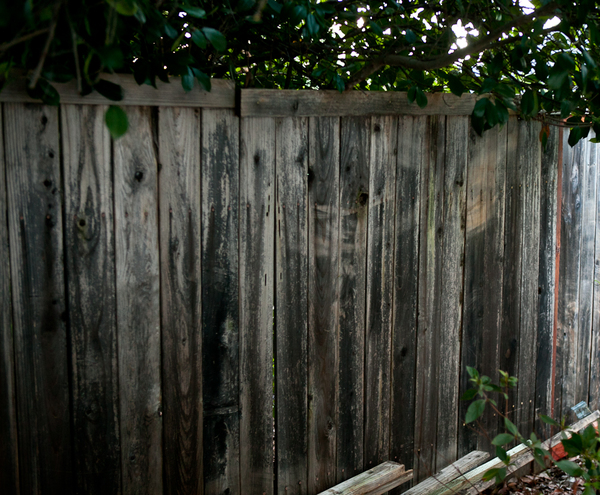


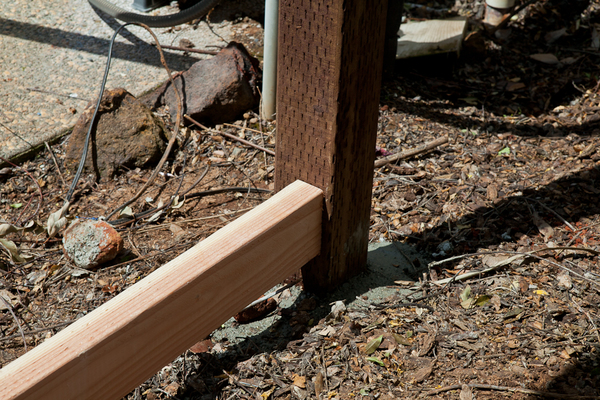
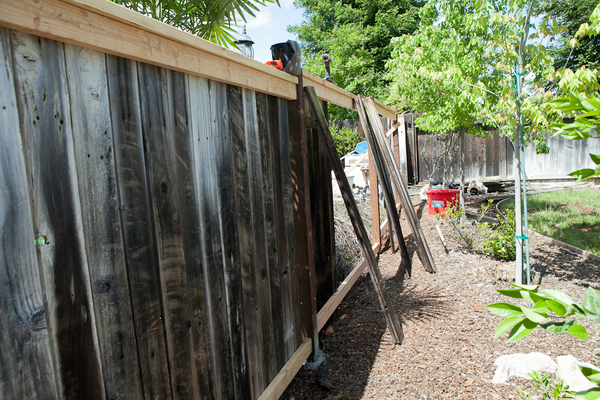
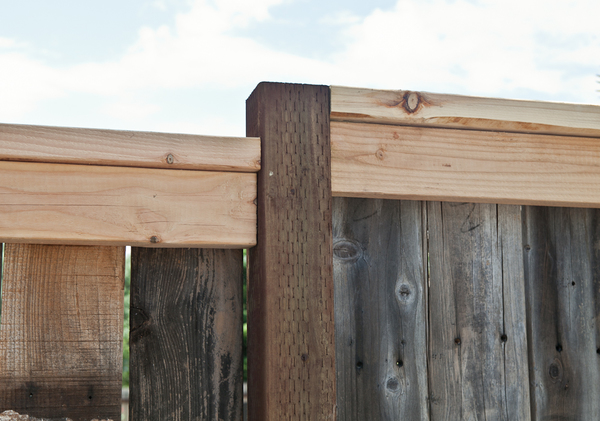
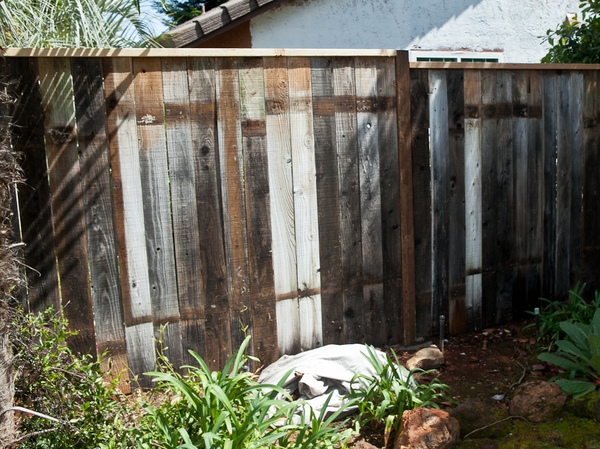
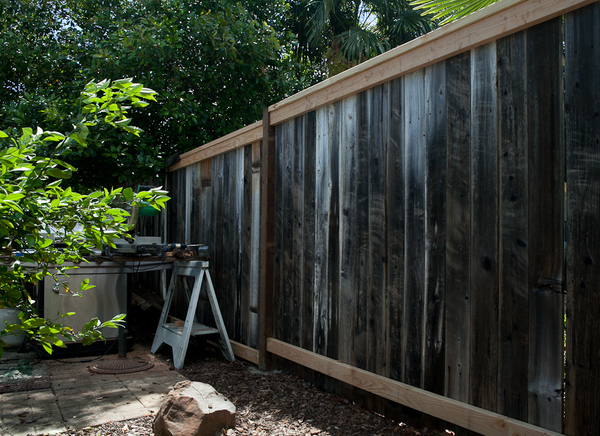











![credit: GE [https://vimeo.com/167347659] Molten Snowball](http://assets.manmadediy.com/photos/28606/Molten_Metal_edited_large.jpg?1463981756) There isn't a day in western life that goes by without something from GE's massive engineering activities making life easier for us all. So when I saw this video about their experiment to preserve a snowball in hell, I just had to see it. You should too. Although it's a bit serious for the subject, the video is a great example of today's engineering capabilities in a fun way that we can all see for ourselves. Taking a snowball and submerging it (protected of course) in molten metal is a fun way to see how far technology has come.
There isn't a day in western life that goes by without something from GE's massive engineering activities making life easier for us all. So when I saw this video about their experiment to preserve a snowball in hell, I just had to see it. You should too. Although it's a bit serious for the subject, the video is a great example of today's engineering capabilities in a fun way that we can all see for ourselves. Taking a snowball and submerging it (protected of course) in molten metal is a fun way to see how far technology has come.

 Rare is the craftsperson who couldn't use just a littlemore workspace. Maybe not more square footage (though I'd certainly take some), but perhaps more work surfaces to spread out projects, or some more storage to keep track of all the bits and pieces that come along with any technique.
Rare is the craftsperson who couldn't use just a littlemore workspace. Maybe not more square footage (though I'd certainly take some), but perhaps more work surfaces to spread out projects, or some more storage to keep track of all the bits and pieces that come along with any technique.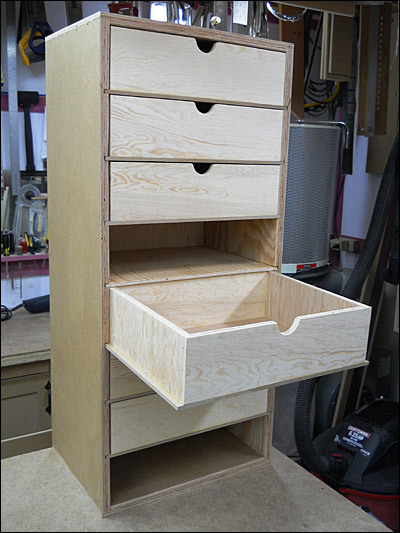
![credit: Chemistry Cocktail [http://www.cocktailchemistrylab.com/smoke-bomb] created at: 05/15/2016](http://assets.manmadediy.com/photos/28563/Screenshot_2016-05-15_at_12.51.31_PM_large.png?1463342960) You've heard of smokey flavored cocktails before... but how about a smoke bomb cocktail that actually explodes? Well not actually explodes, but with a flourishing crack to the ice cube mold from a tiny hammer or utensil, billowing smoke will pour out into the rest of your Black Manhattan (or other smokey drink of choice)...
You've heard of smokey flavored cocktails before... but how about a smoke bomb cocktail that actually explodes? Well not actually explodes, but with a flourishing crack to the ice cube mold from a tiny hammer or utensil, billowing smoke will pour out into the rest of your Black Manhattan (or other smokey drink of choice)... ![credit: Chemistry Cocktail [http://www.cocktailchemistrylab.com/smoke-bomb] created at: 05/15/2016](http://assets.manmadediy.com/photos/28562/Screenshot_2016-05-15_at_1.02.16_PM_large.png?1463342877) The idea comes from the mind of Chemistry Cocktail and requires a little bit of work, but not too much that you couldn't successfully pull it off while hosting a dinner party. Check out the video below for instructions or take a look at the
The idea comes from the mind of Chemistry Cocktail and requires a little bit of work, but not too much that you couldn't successfully pull it off while hosting a dinner party. Check out the video below for instructions or take a look at the ![credit: Lifehacker [http://lifehacker.com/eight-things-you-probably-didnt-know-you-could-stream-o-1776963565]](http://assets.manmadediy.com/photos/28605/hjtiuze6r1zeidf4swbi_large.jpg?1463975213) Spotify has completely revolutionized my music-listening experience. Their browsing feature and Discover Weekly playlist has made into a much hipper dude and generally increased my quality of life, no joke. However it was only recently that I discovered a whole host of new Spotify streamable options, turning the widening gyre all over again.
Spotify has completely revolutionized my music-listening experience. Their browsing feature and Discover Weekly playlist has made into a much hipper dude and generally increased my quality of life, no joke. However it was only recently that I discovered a whole host of new Spotify streamable options, turning the widening gyre all over again. 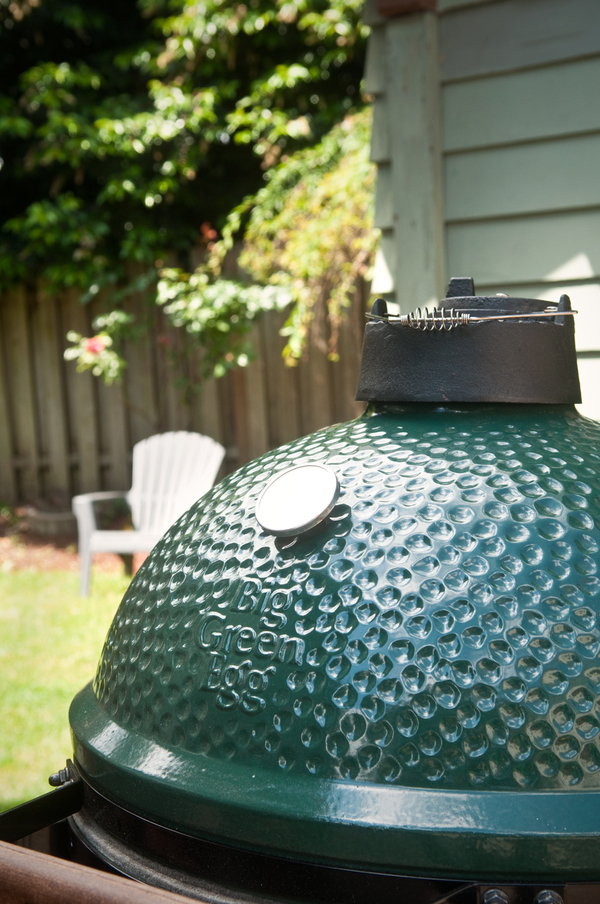
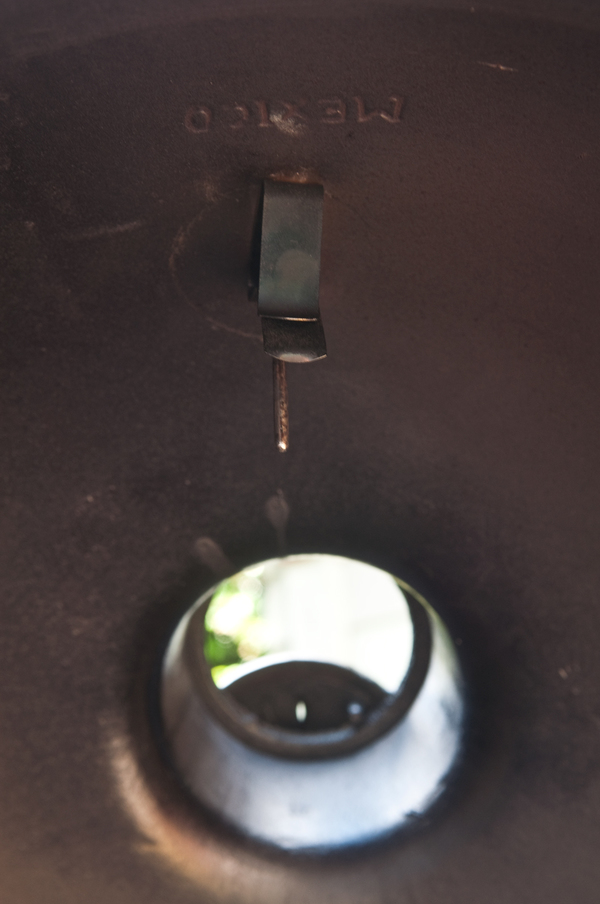






![credit: Popular Mechanics [http://www.popularmechanics.com/home/tools/how-to/g2621/things-you-didnt-know-you-could-do-with-a-torch/]](http://assets.manmadediy.com/photos/28601/landscape-1463577637-0-remove-paint_large.jpg?1463973648) In the early days of building your workshop it's important to invest in tools with multiple functions so as to get the most bang for you buck. Now normally I'd think a blowtorch doesn't exactly fit that criteria, although since reading this I'm beginning to rethink that...
In the early days of building your workshop it's important to invest in tools with multiple functions so as to get the most bang for you buck. Now normally I'd think a blowtorch doesn't exactly fit that criteria, although since reading this I'm beginning to rethink that...![credit: Popular Mechanics [http://www.popularmechanics.com/home/tools/how-to/g2621/things-you-didnt-know-you-could-do-with-a-torch/]](http://assets.manmadediy.com/photos/28602/1-loosen-rustly-bolts_large.jpg?1463973650) Need to loosen some bolts? Blowtorch.
Need to loosen some bolts? Blowtorch.![credit: Popular Mechanics [http://www.popularmechanics.com/home/tools/how-to/g2621/things-you-didnt-know-you-could-do-with-a-torch/]](http://assets.manmadediy.com/photos/28603/10-steak_large.jpg?1463973651) Need to cook a steak?
Need to cook a steak? ![credit: Popular Mechanics [http://www.popularmechanics.com/home/tools/how-to/g2621/things-you-didnt-know-you-could-do-with-a-torch/]](http://assets.manmadediy.com/photos/28604/6-gettyimages-168336962_large.jpg?1463973652)
 Just about any drink can be layered for a more complex flavor with the right dash of bitters, so it’s standard to find a few different bottles in the well-stocked liquor cabinet. So, which ones will serve you best? Let’s talk. As a fan of a good cocktail, the maker in me loves to combine good ingredients into something even better. So my home bar is stocked with the staples, and a few extras to make those cocktails really memorable. By far, the most interesting ingredients I have in stock are the little bottles of bitters. These mystery concoctions add a bit of bitterness of course, but in addition can bring some sweetness, a bit or sour, or even some spice to that highball. They're like the salt and pepper of the liquor cabinet - the manage to make the other ingredients taste more like themselves.
Just about any drink can be layered for a more complex flavor with the right dash of bitters, so it’s standard to find a few different bottles in the well-stocked liquor cabinet. So, which ones will serve you best? Let’s talk. As a fan of a good cocktail, the maker in me loves to combine good ingredients into something even better. So my home bar is stocked with the staples, and a few extras to make those cocktails really memorable. By far, the most interesting ingredients I have in stock are the little bottles of bitters. These mystery concoctions add a bit of bitterness of course, but in addition can bring some sweetness, a bit or sour, or even some spice to that highball. They're like the salt and pepper of the liquor cabinet - the manage to make the other ingredients taste more like themselves. 

![credit: Popular Mechanics [http://pop.h-cdn.co/assets/16/20/980x490/1463605686-landscape-1463521149-glamping-photo-courtesy-of-winnebago.jpg]](http://assets.manmadediy.com/photos/28598/1463605686-landscape-1463521149-glamping-photo-courtesy-of-winnebago_large.jpg?1463972520) I once was hired to write a series of brochures for a product line of mobile homes and found myself becoming incredibly drawn to them. They're just so cool! So streamlined and efficient for living (though not for the environment), not to mention the whole, pick and go anywhere at any time you want thing.
I once was hired to write a series of brochures for a product line of mobile homes and found myself becoming incredibly drawn to them. They're just so cool! So streamlined and efficient for living (though not for the environment), not to mention the whole, pick and go anywhere at any time you want thing. ![credit: Popular Mechanics [http://www.popularmechanics.com/adventure/outdoors/a20937/rv-trip-planner/]](http://assets.manmadediy.com/photos/28599/1463605604-syn-pop-1463592238-glamping-sunsetpoint-lakelbj-marblefalls-tx-courtesy-jeff-crider_large.jpg?1463972523) My only real exposure to the RV community was when my brother and I rafted the Mississippi River and were stranded in a motor home community for a week after our motor caught fire. I was blown away by the camaraderie and simultaneous sense of a stable community coupled with a hearty vacation vibe and knew I would one day want to be a part of something like that.
My only real exposure to the RV community was when my brother and I rafted the Mississippi River and were stranded in a motor home community for a week after our motor caught fire. I was blown away by the camaraderie and simultaneous sense of a stable community coupled with a hearty vacation vibe and knew I would one day want to be a part of something like that.![credit: Popular Mechanics [http://www.popularmechanics.com/adventure/outdoors/a20937/rv-trip-planner/]](http://assets.manmadediy.com/photos/28600/1463605596-syn-pop-1463591806-jumpingpillow-kozyrest-campground-harrisville-pa_large.jpg?1463972526) So if you're interested in dabbing your foot in the water, check out this insightful guide from Popular Mechanics on
So if you're interested in dabbing your foot in the water, check out this insightful guide from Popular Mechanics on ![credit: Imagur [http://imgur.com/gallery/Xb49o] Survival Kit](http://assets.manmadediy.com/photos/28608/Gentleman_edited_large.jpg?1463982659) You never know when disaster may strike, so keeping a kit full of survival gear close is important. Here's a quick DIY on the gentleman's survival kit. I've seen this project go around a few times and it just hits me every time. Sure with a kit like this, you won't really last long, but you'll definitely go out in style. But, for the less drastic points in life, a kit like this is an instant upscale mixer. Show up anywhere and you're bound to be the life of the party.
You never know when disaster may strike, so keeping a kit full of survival gear close is important. Here's a quick DIY on the gentleman's survival kit. I've seen this project go around a few times and it just hits me every time. Sure with a kit like this, you won't really last long, but you'll definitely go out in style. But, for the less drastic points in life, a kit like this is an instant upscale mixer. Show up anywhere and you're bound to be the life of the party. ![credit: Imagur [http://imgur.com/gallery/Xb49o] Making the kit](http://assets.manmadediy.com/photos/28607/Gentlman_edited_large.jpg?1463982624) The kit is a simple suitcase, with cut-out inserts for whatever essentials you may deem necessary to fully survive the moment, a few cuts and some simple leather straps to keep it all in place.
The kit is a simple suitcase, with cut-out inserts for whatever essentials you may deem necessary to fully survive the moment, a few cuts and some simple leather straps to keep it all in place. 


























![credit: Popular Mechanics [http://www.popularmechanics.com/home/how-to/a21051/grill-snake-method/]](http://assets.manmadediy.com/photos/28639/gallery-1464295877-snake-temp_large.jpg?1464457014) Last weekend I grilled in a public park for a friend's birthday and my buddy remembered all of the necessary ingredients... except for the grill. Someone dashed out to pick up a cheap grill from Target ($16!) and I began scouring the internet for cool ways to good meat on a cheap grill. And that's how I learned about the Snake Method...
Last weekend I grilled in a public park for a friend's birthday and my buddy remembered all of the necessary ingredients... except for the grill. Someone dashed out to pick up a cheap grill from Target ($16!) and I began scouring the internet for cool ways to good meat on a cheap grill. And that's how I learned about the Snake Method... ![credit: Popular Mechanics [http://www.popularmechanics.com/home/how-to/a21051/grill-snake-method/]](http://assets.manmadediy.com/photos/28640/gallery-1464295599-snake-lineup_large.jpg?1464457017) The
The ![credit: Popular Mechanics [http://www.popularmechanics.com/home/how-to/a21051/grill-snake-method/]](http://assets.manmadediy.com/photos/28641/gallery-1464295794-snake-pan_large.jpg?1464457018)








